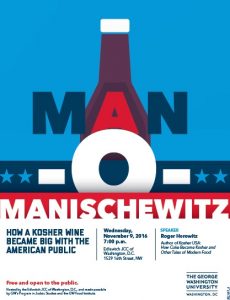Long before gefilte shrimp appeared on the menu of an upscale Manhattan eatery and bagels were studded with bacon bits, there was Manischewitz, a sweet, kosher wine with a wide appeal in postwar America. Hailed as the nation's very first cross-over product, it was as likely to be found in African-American homes as in American Jewish ones. Drawing on a peppy radio jingle -- “Man-O- Manischewitz, what a wine!” -- as well as on advertisements in Ebony magazine, its manufacturers celebrated the virtues of “wine like mother used to make.”

The relationship between the palate and the pocketbook, between culinary preferences and consumer practices, lies at the heart of a fascinating new book: Kosher USA: How Coke Became Kosher and Other Tales of Modern Food. Its author, Roger Horowitz, director of the Center for the History of Business, Technology, and Society at the Hagley Museum and Library, brings to bear a wealth of sources and a lively historical imagination as he uncovers what earlier generations of Americans ate and drank.
The book is a must-read for anyone interested in America’s culinary history. But you don’t just have to read all about it, for Mr. Horowitz is coming to town. Thanks to the generosity of GW’s Food Institute and the Program in Judaic Studies, he’ll be on hand to deliver a talk titled “Man-O- Manischewitz: How A Kosher Wine Became Big with the American Public.”
The date: November 9, 2016
The time: 7 p.m – 8 p.m.
The place: The Edlavitch DC-JCC, 1529 16 th Street, N.W., Washington, D.C.
Be there for what promises to be a lively and spirited presentation.

